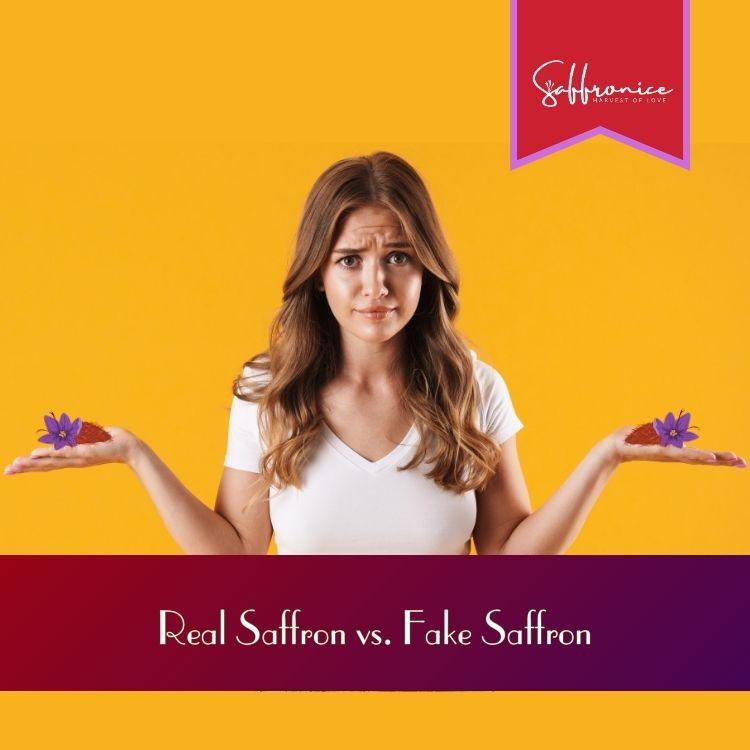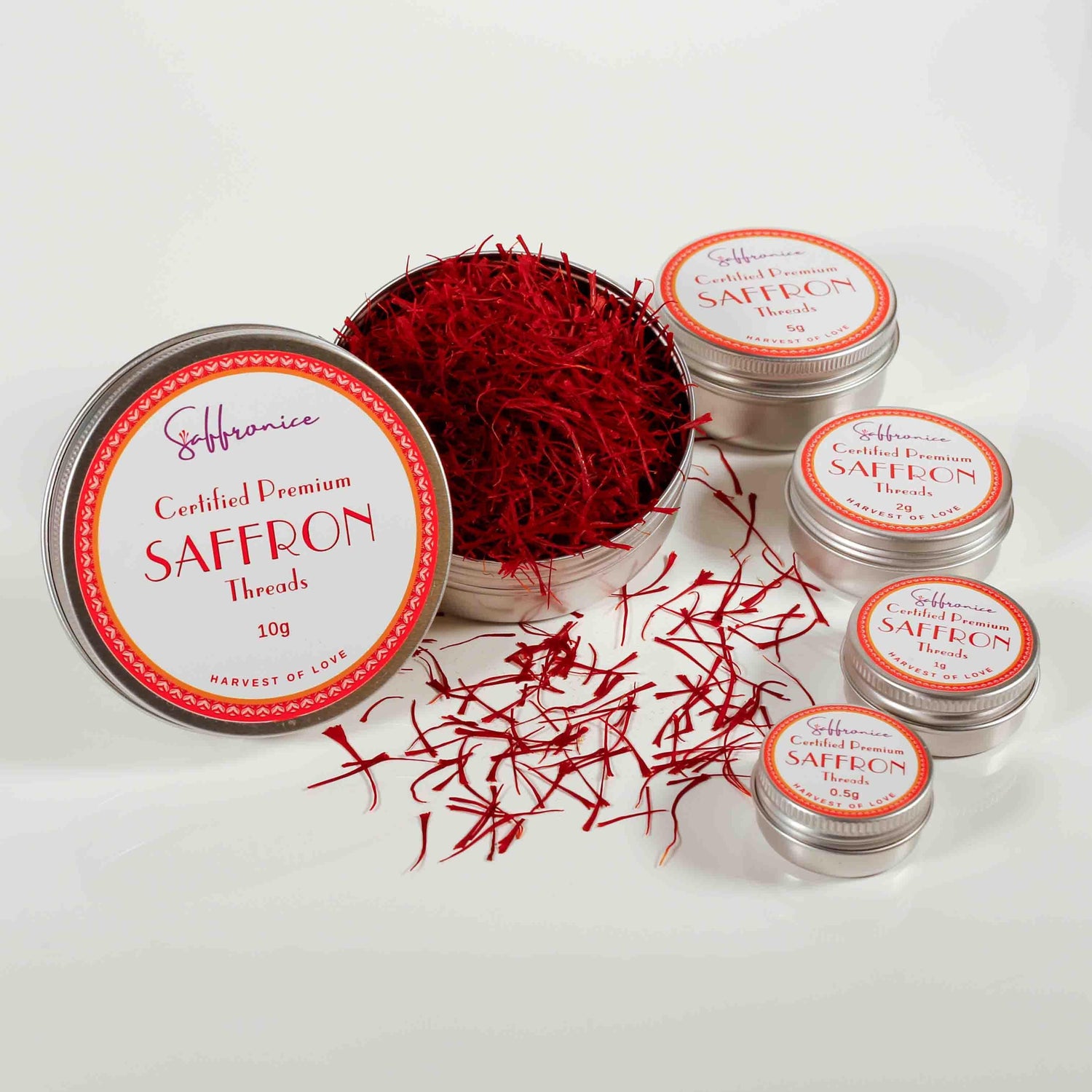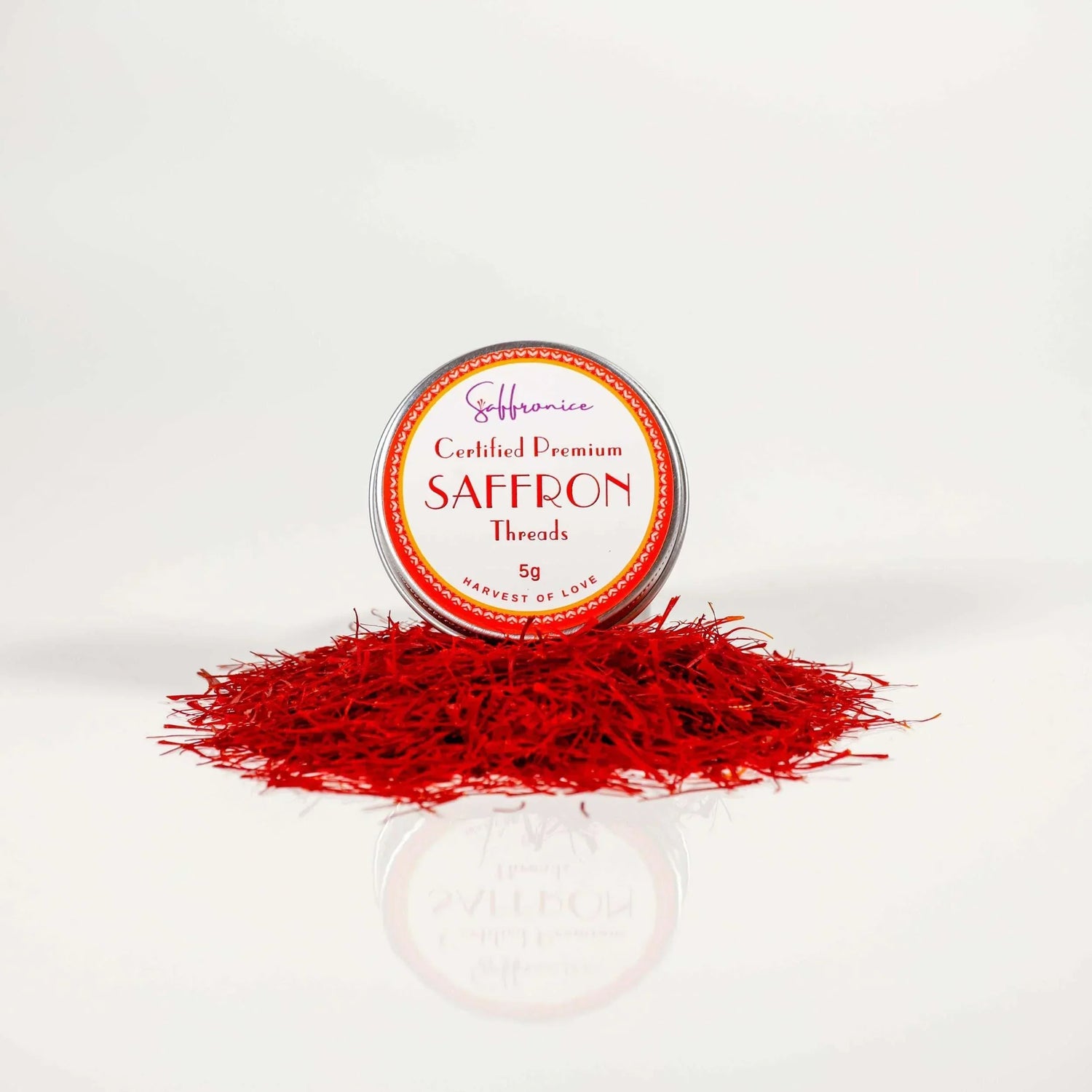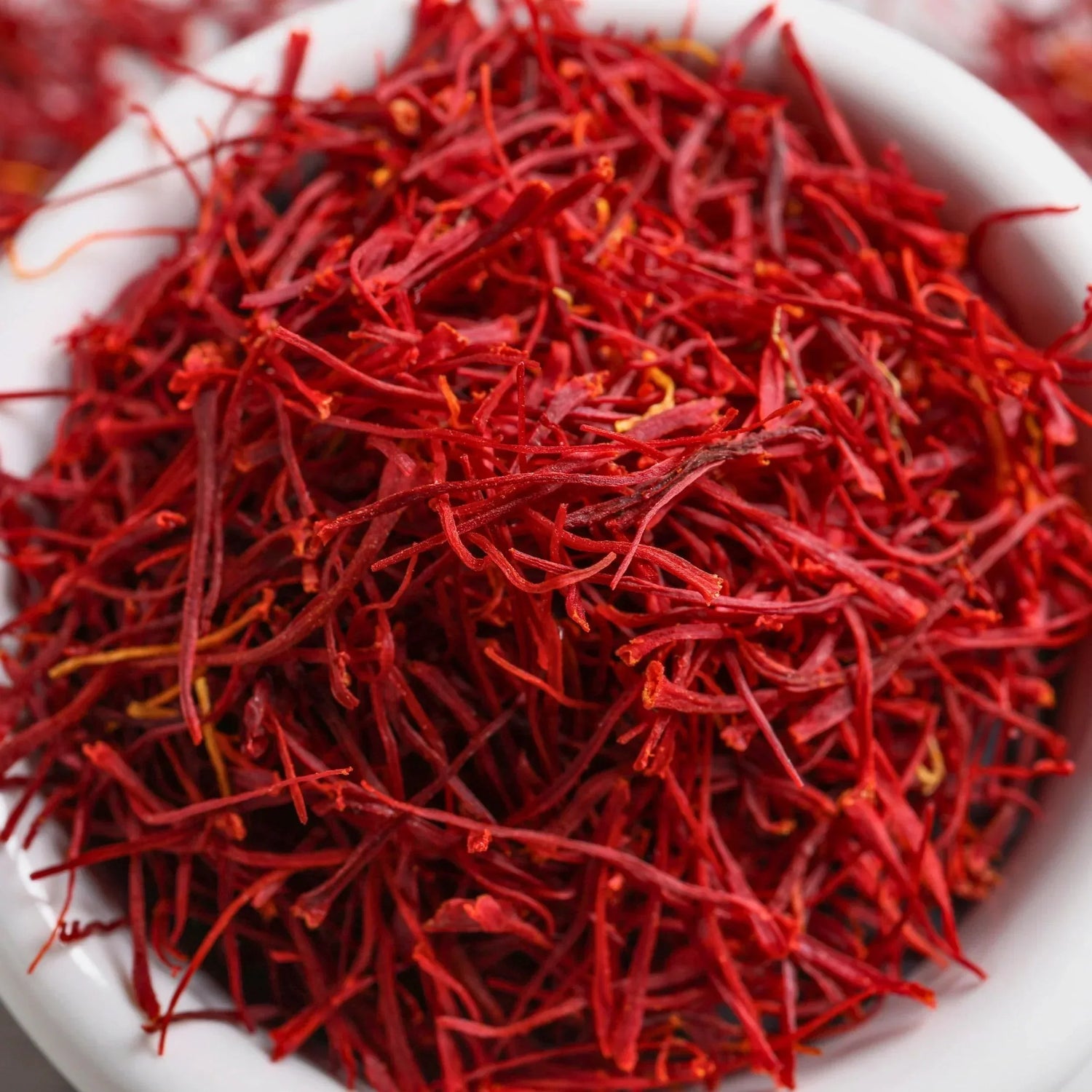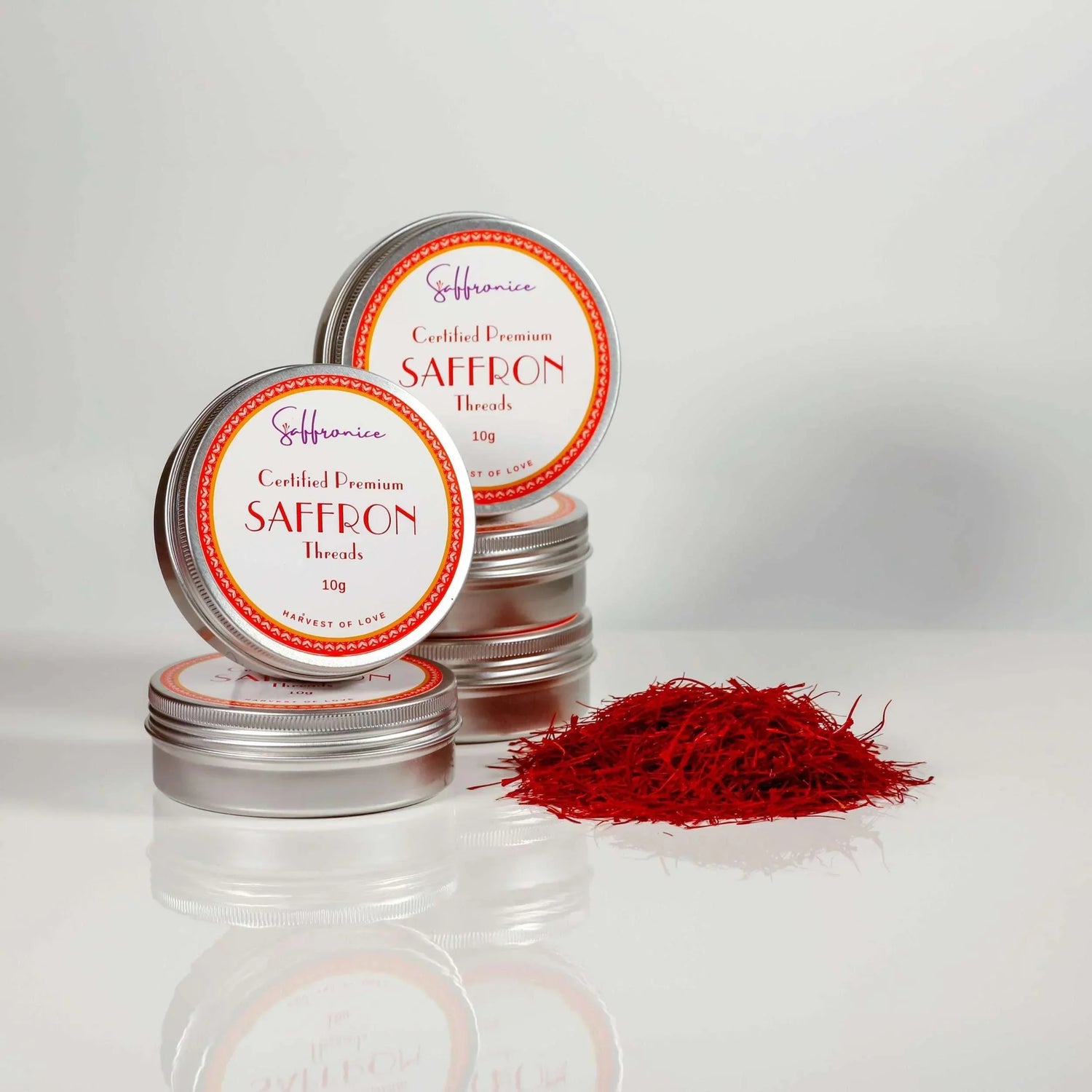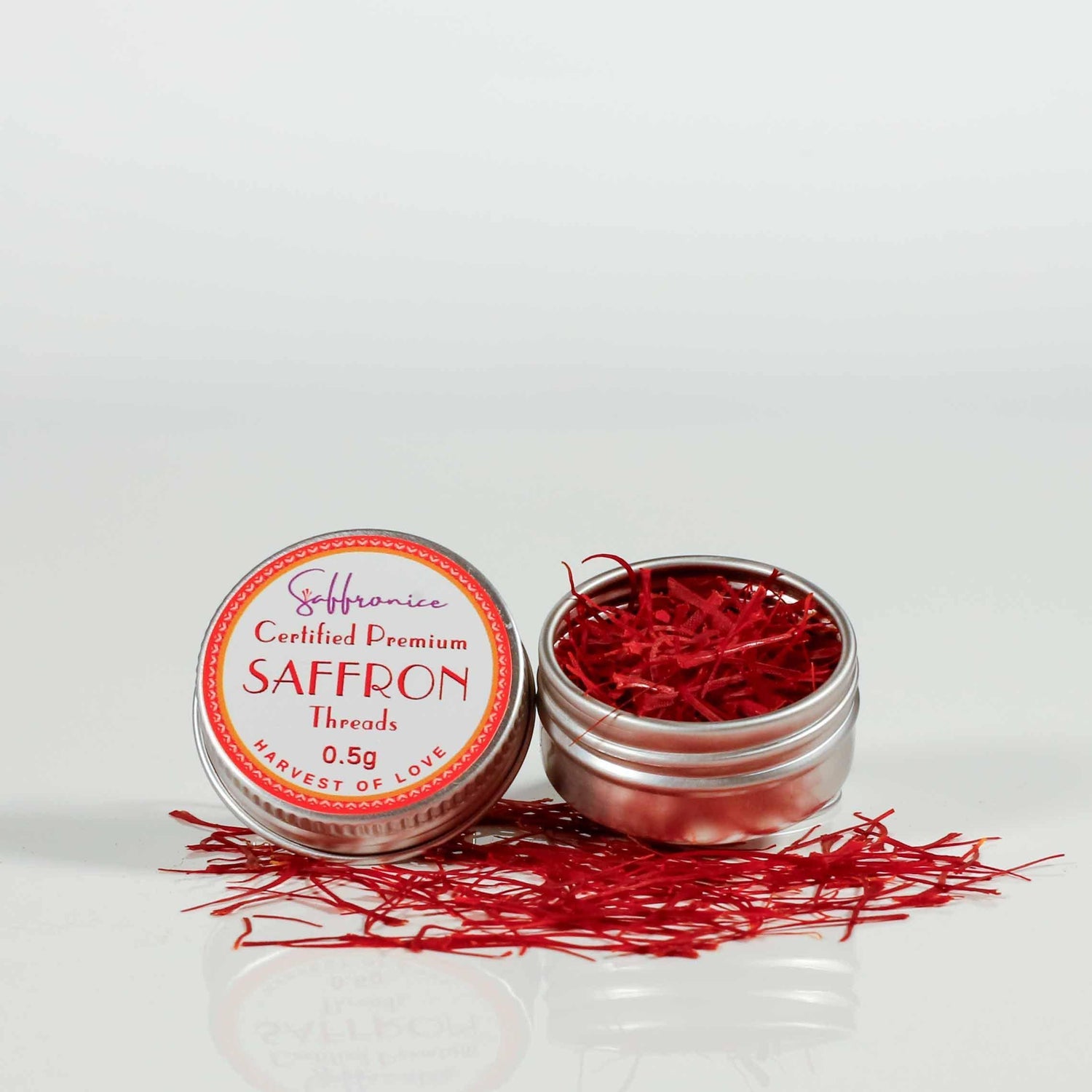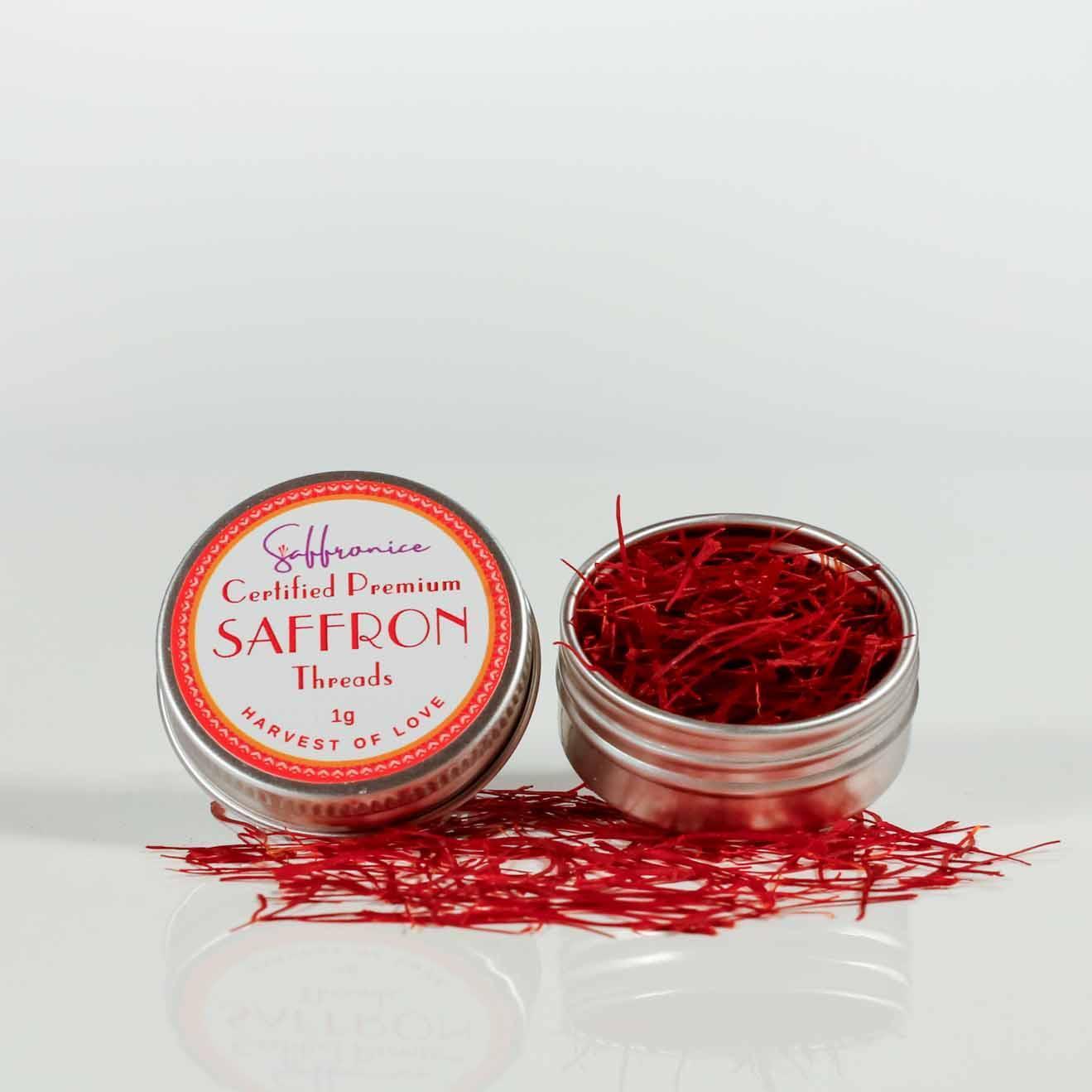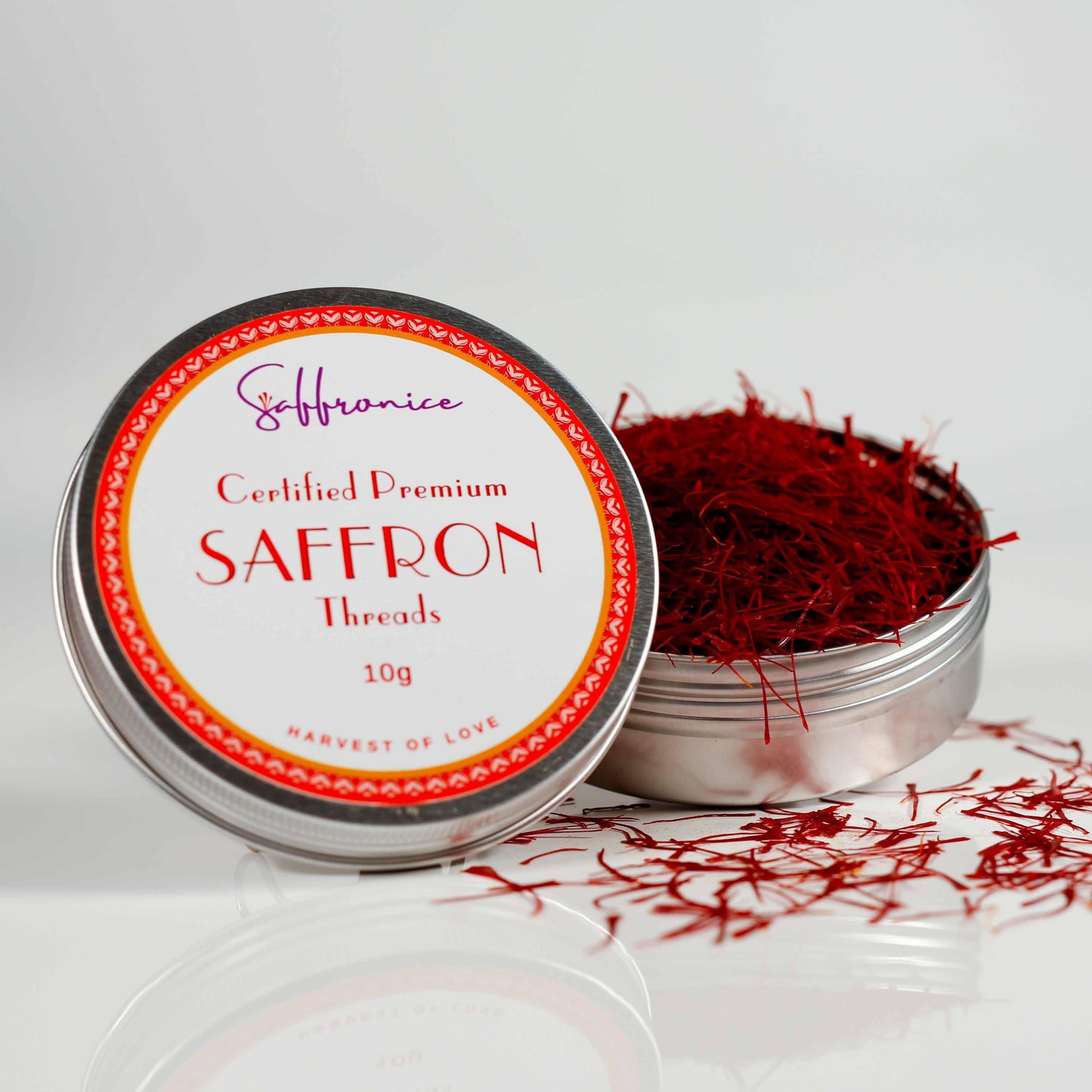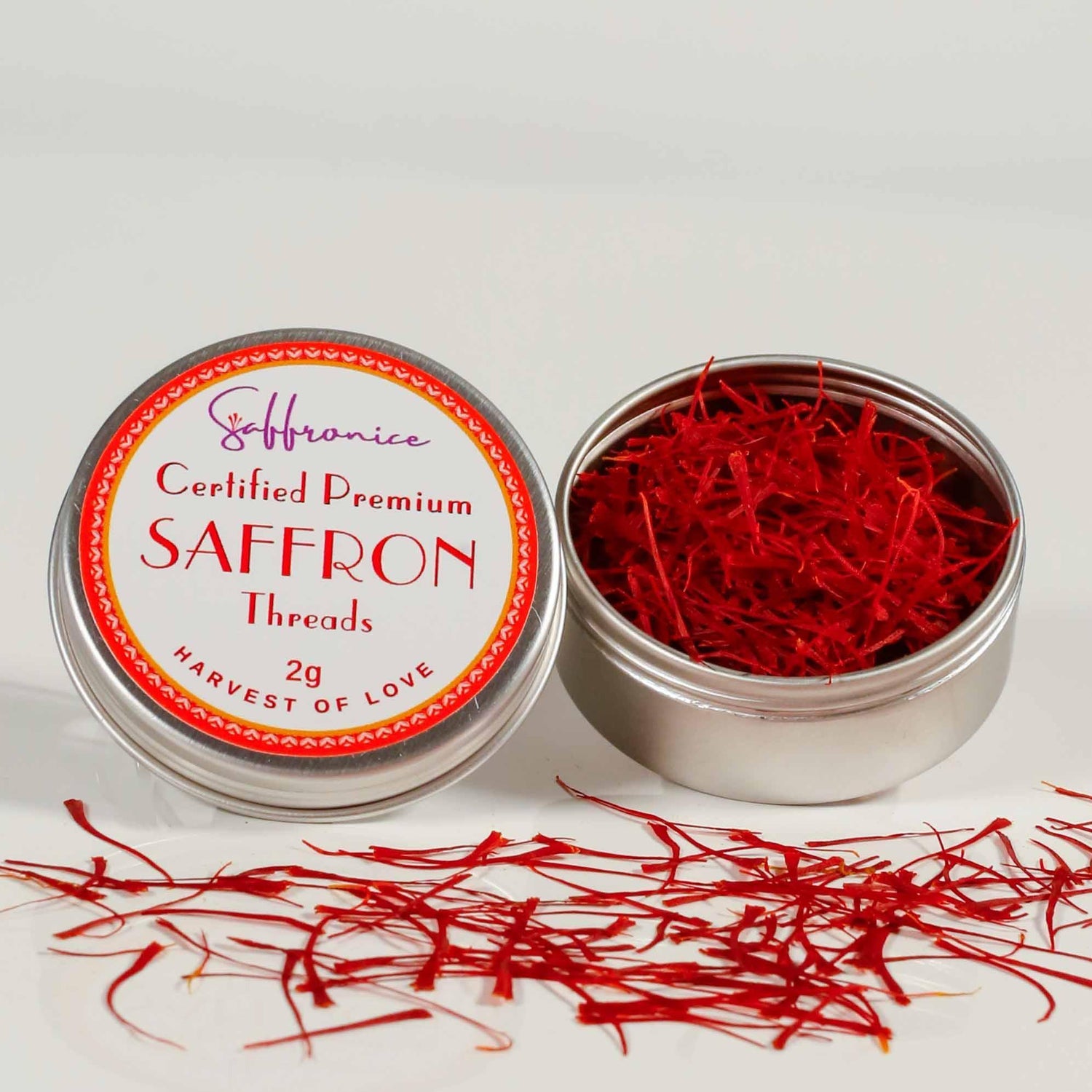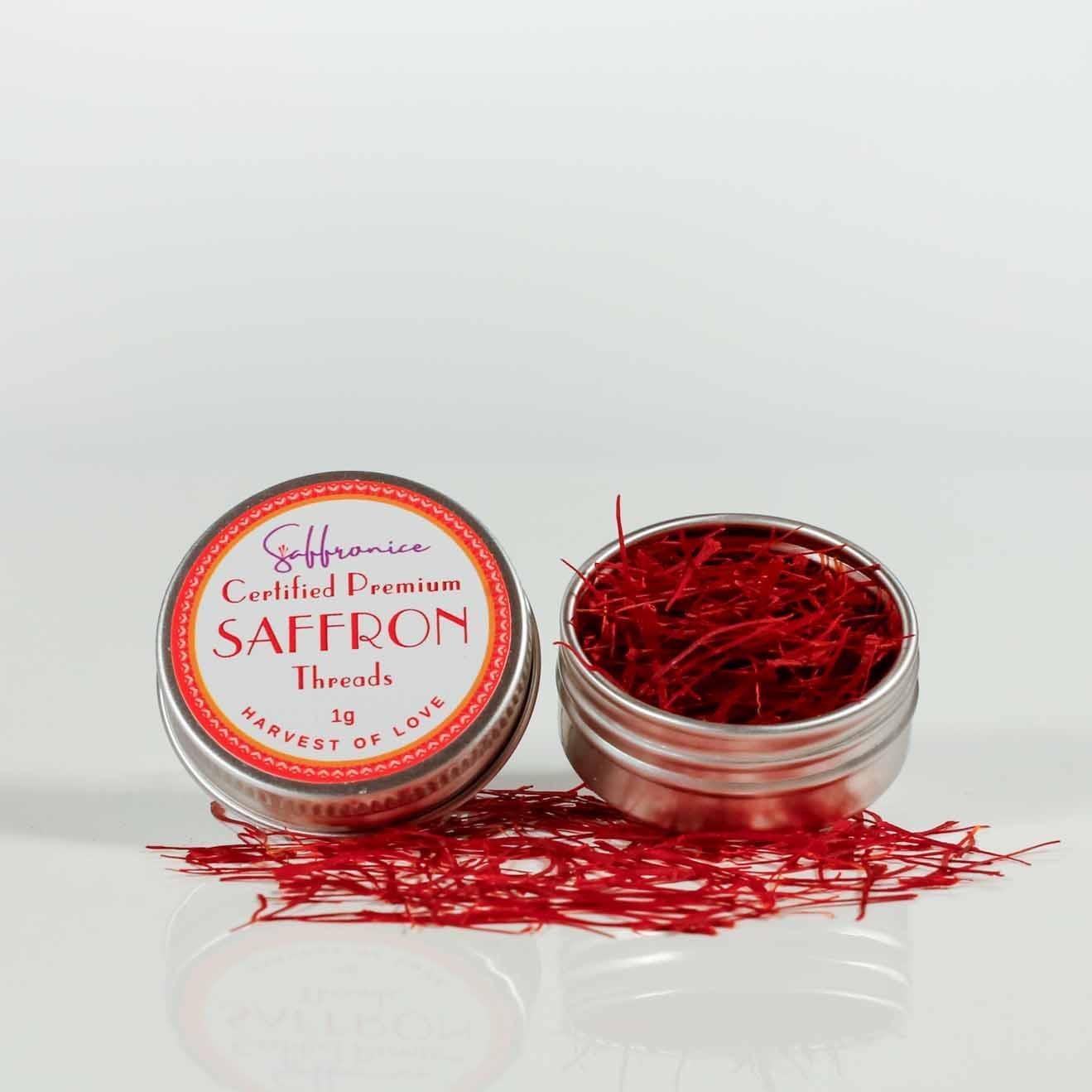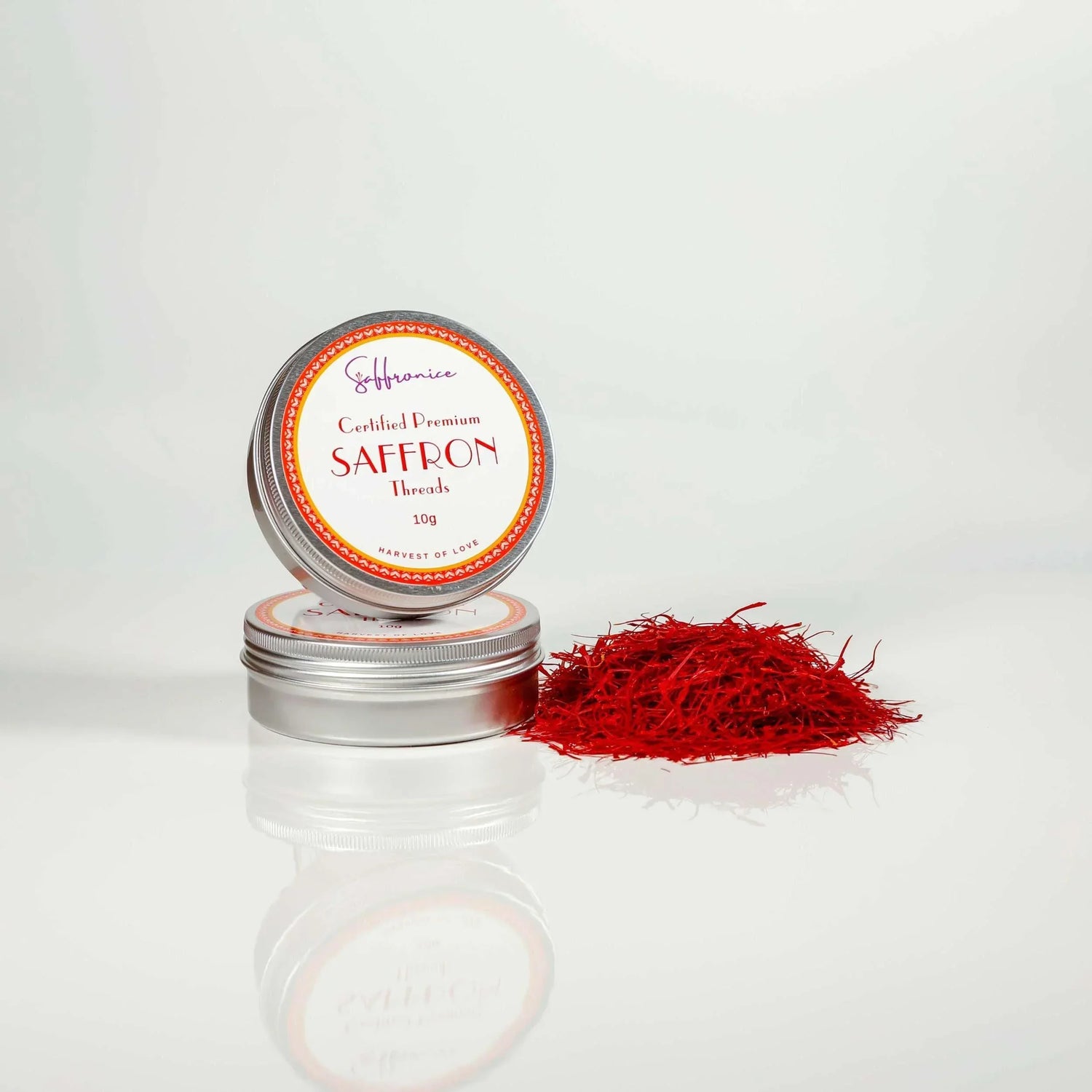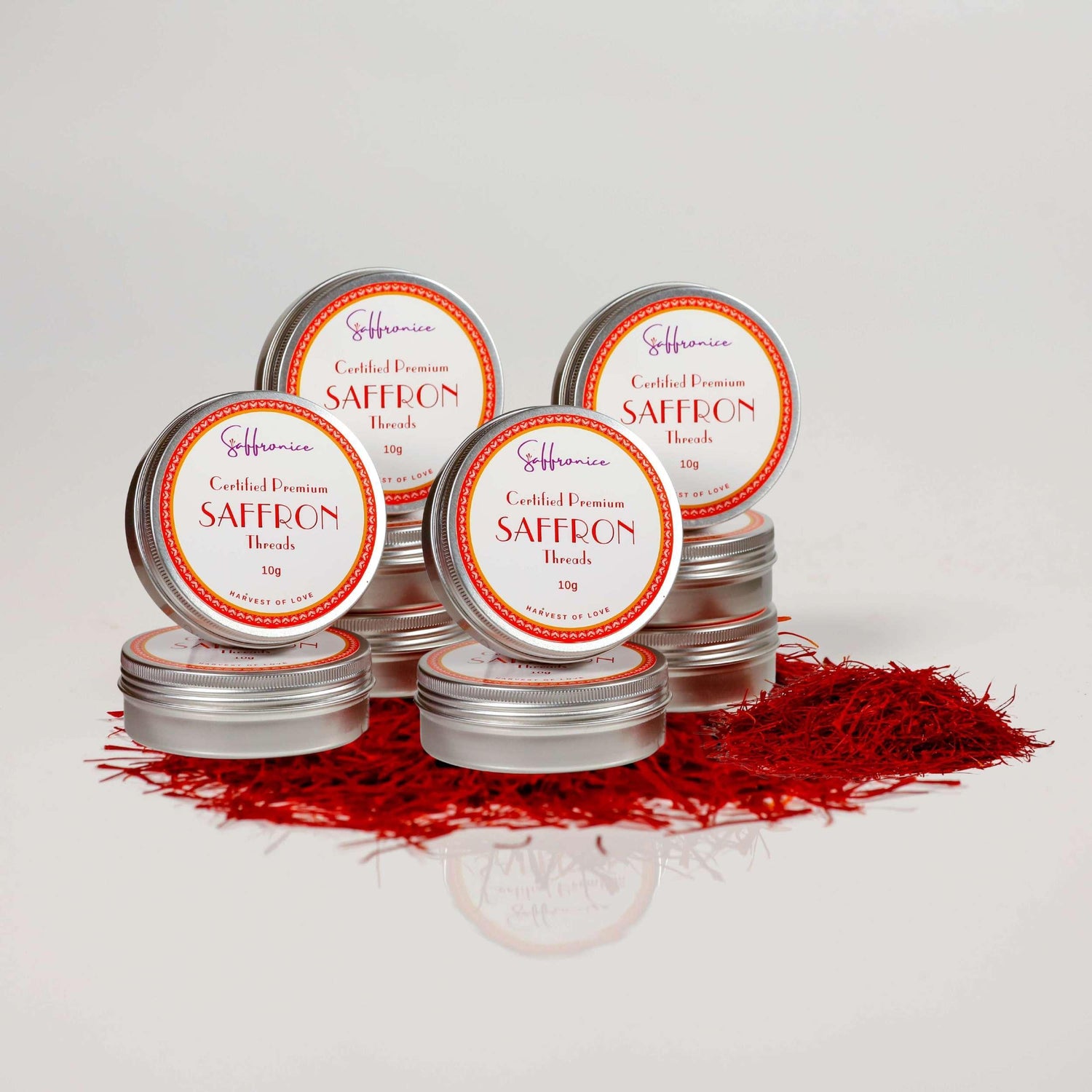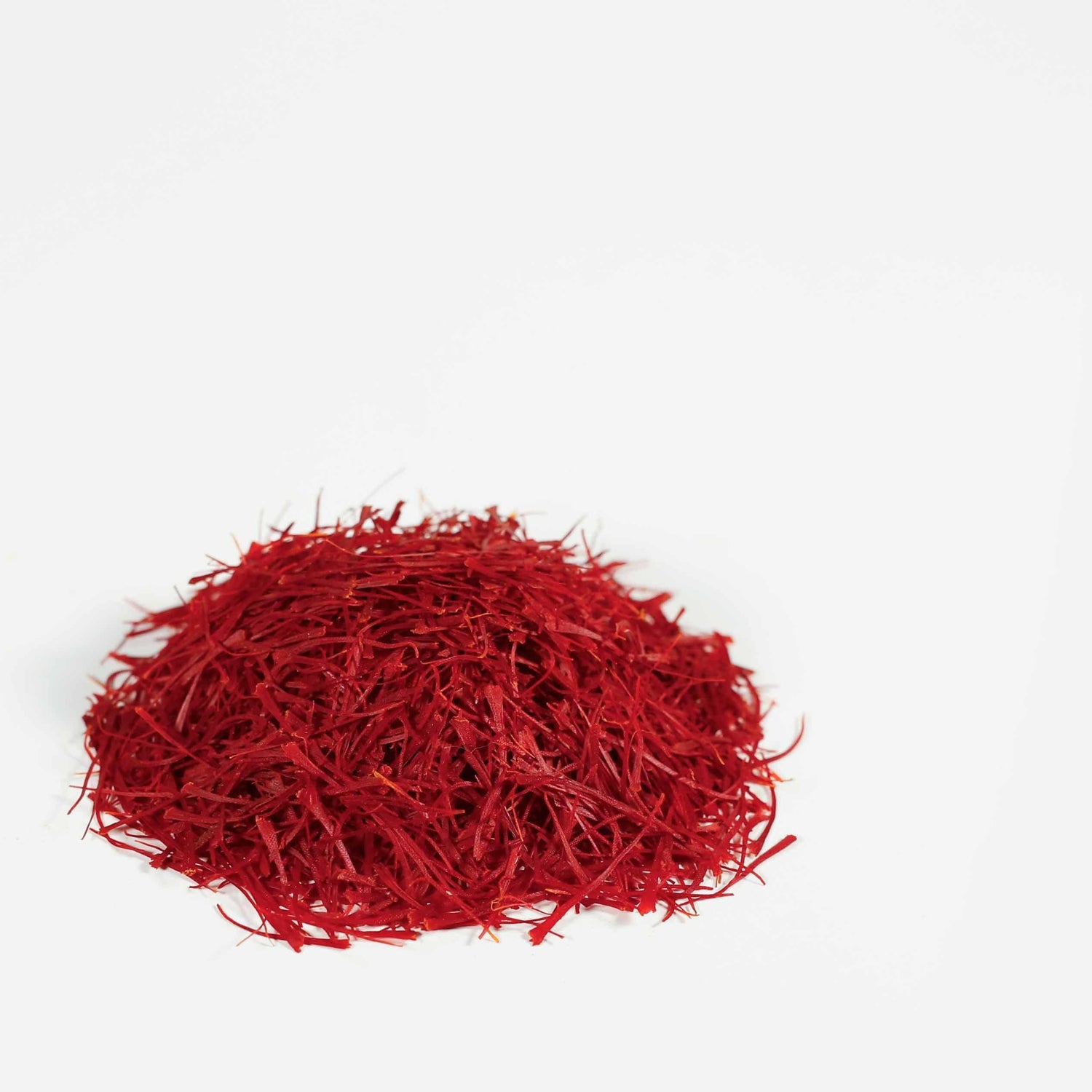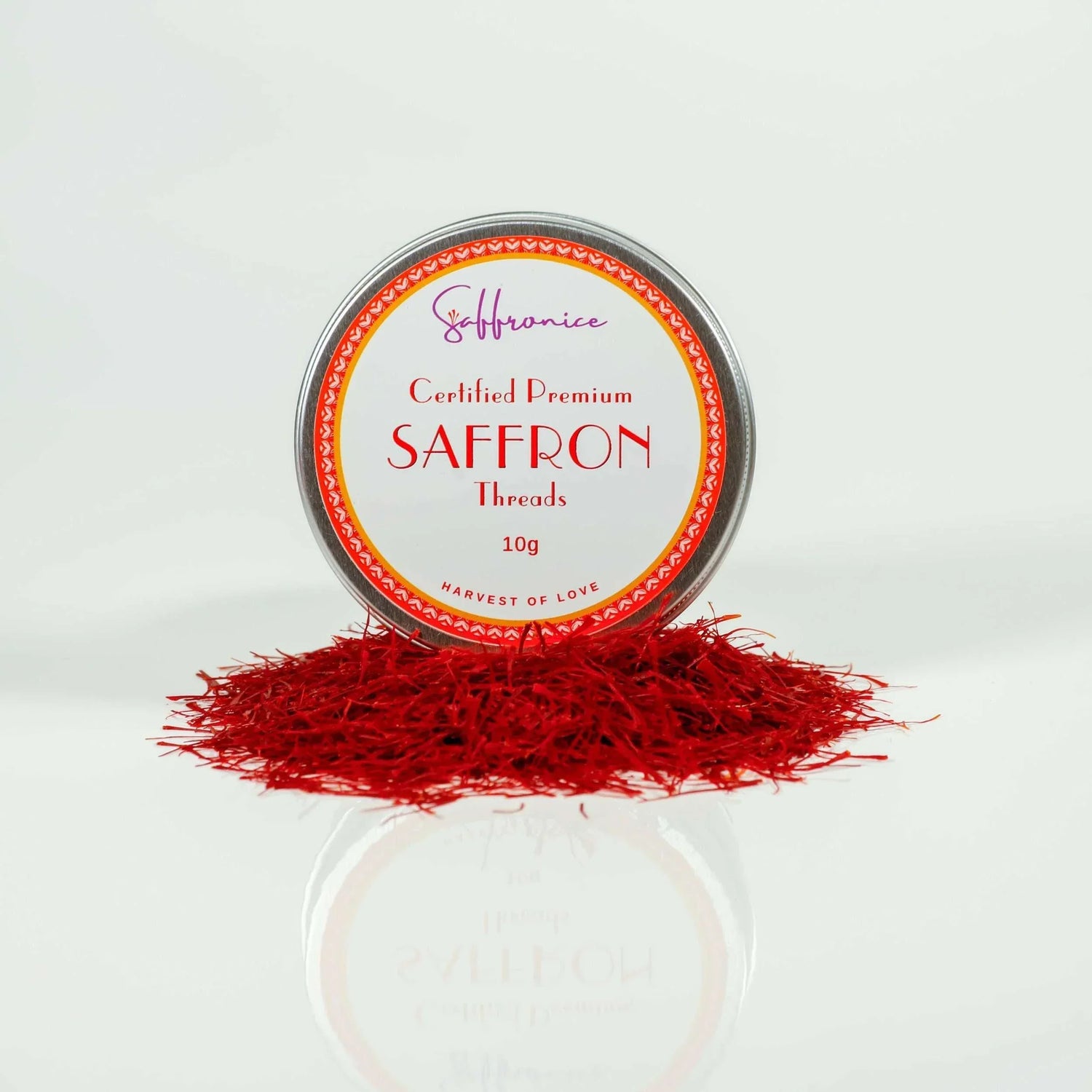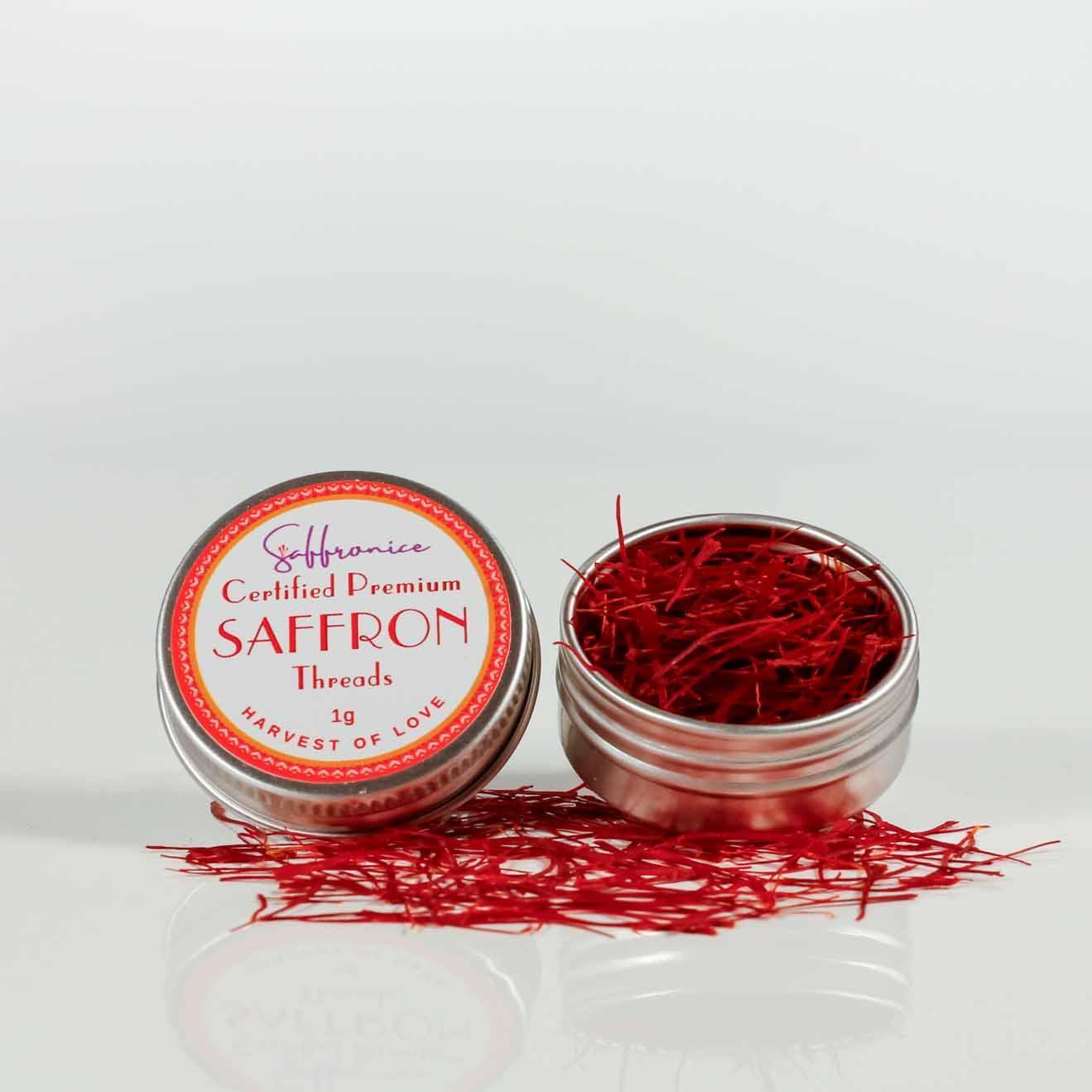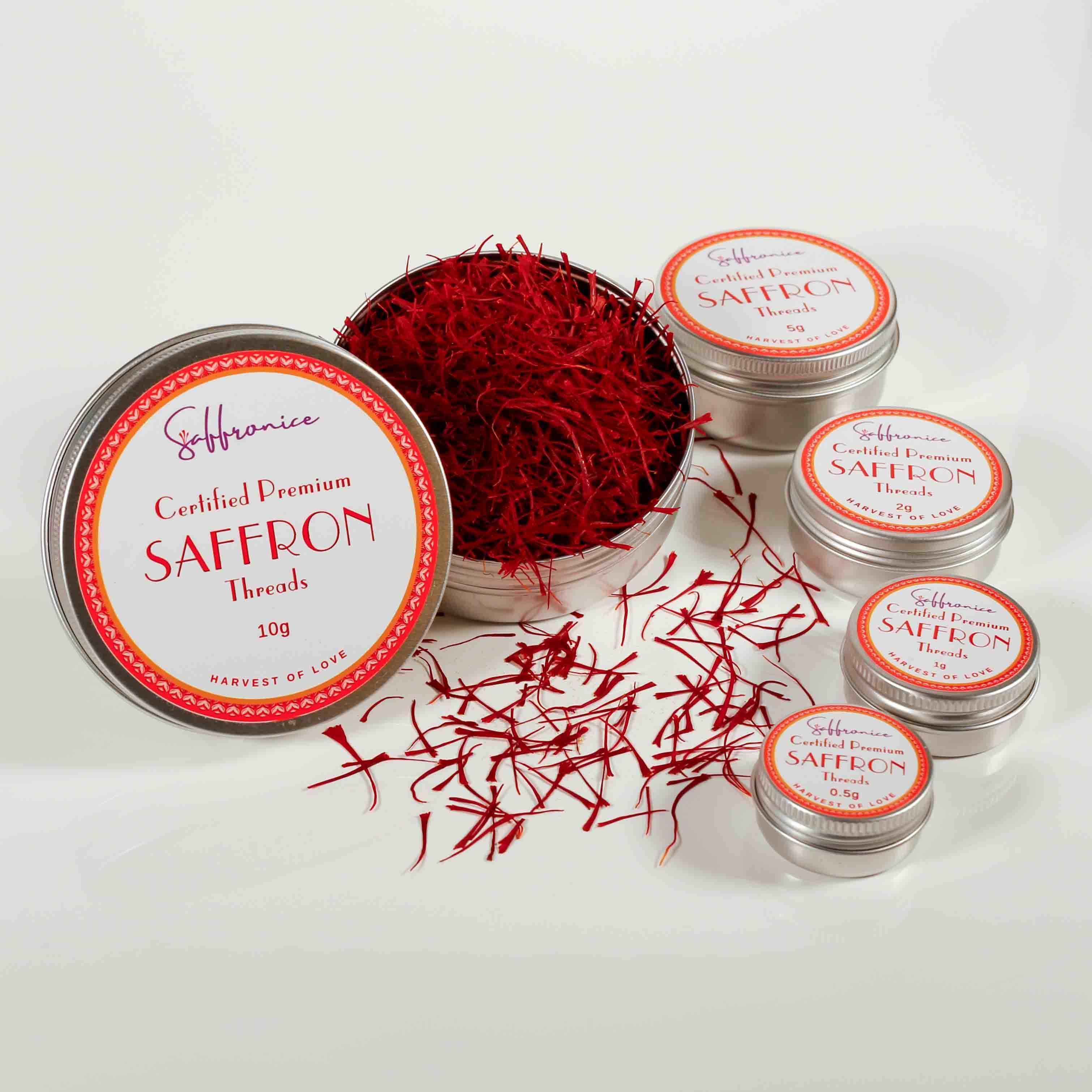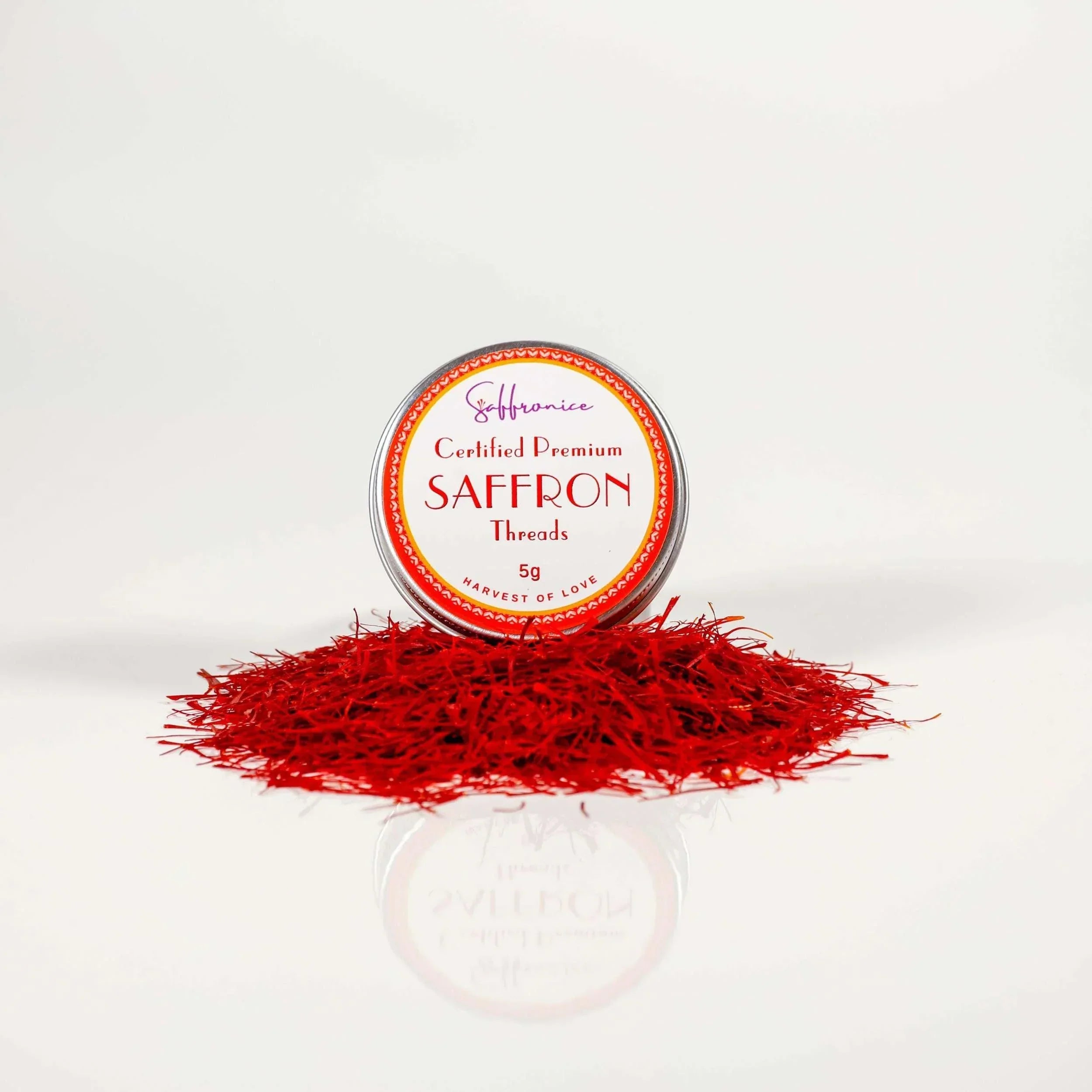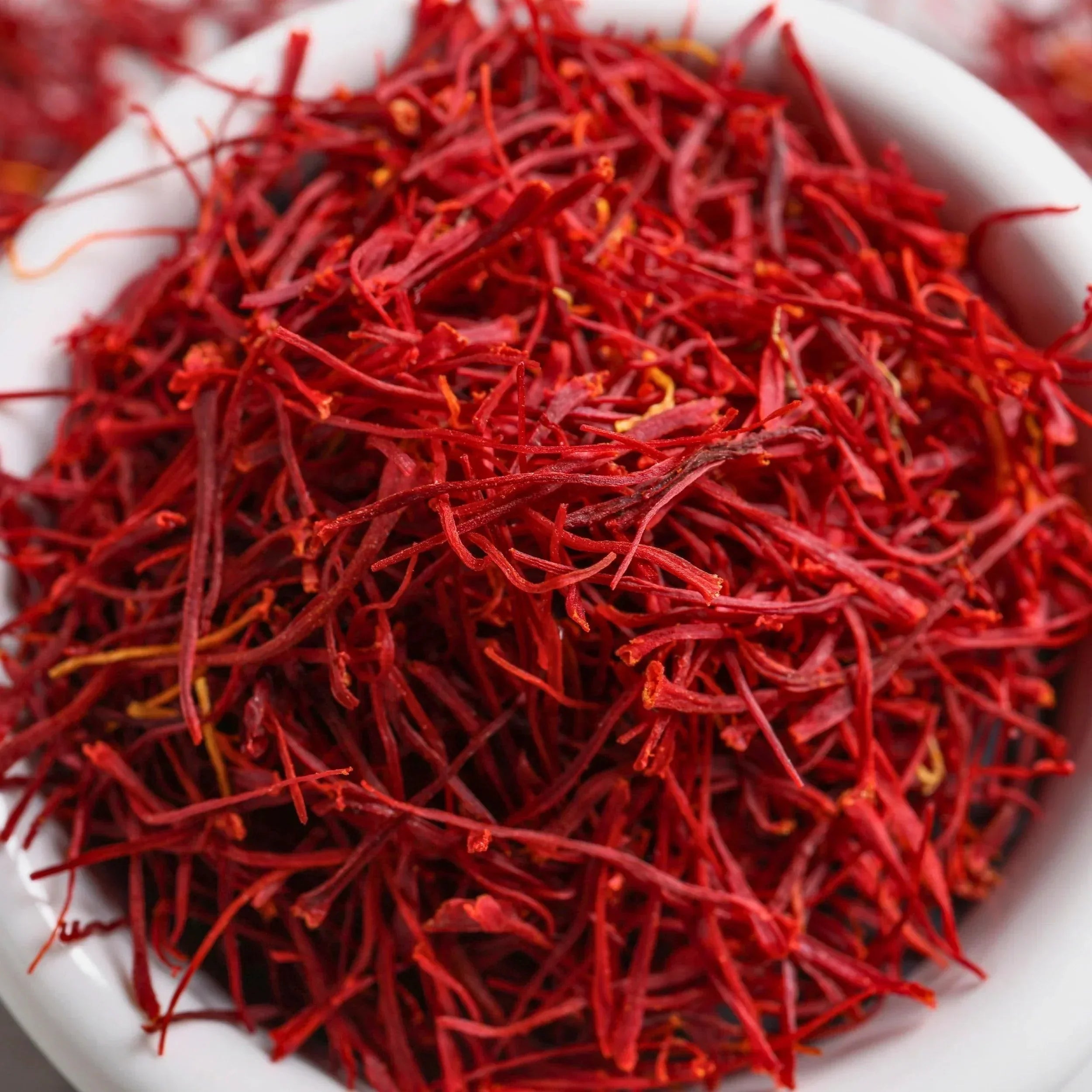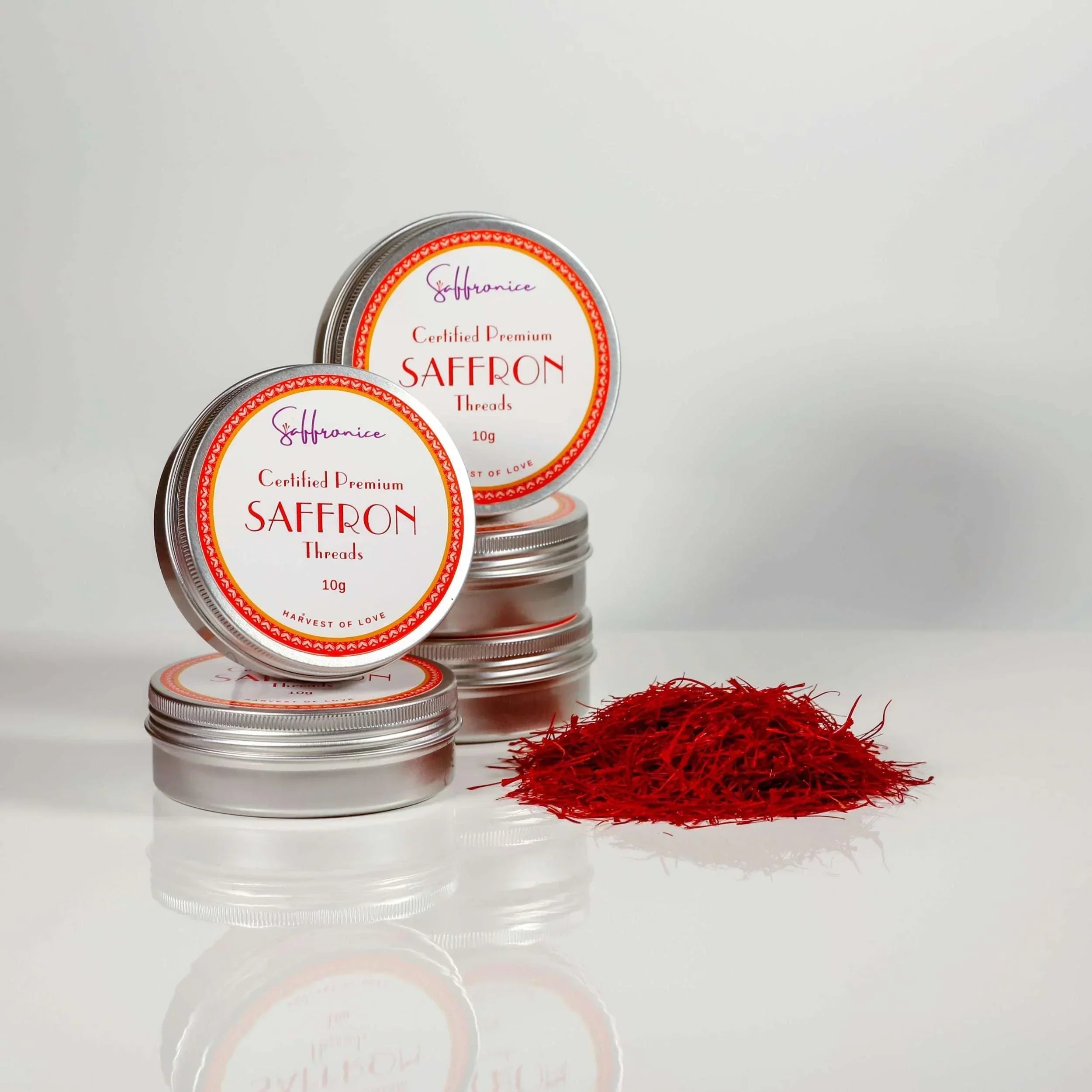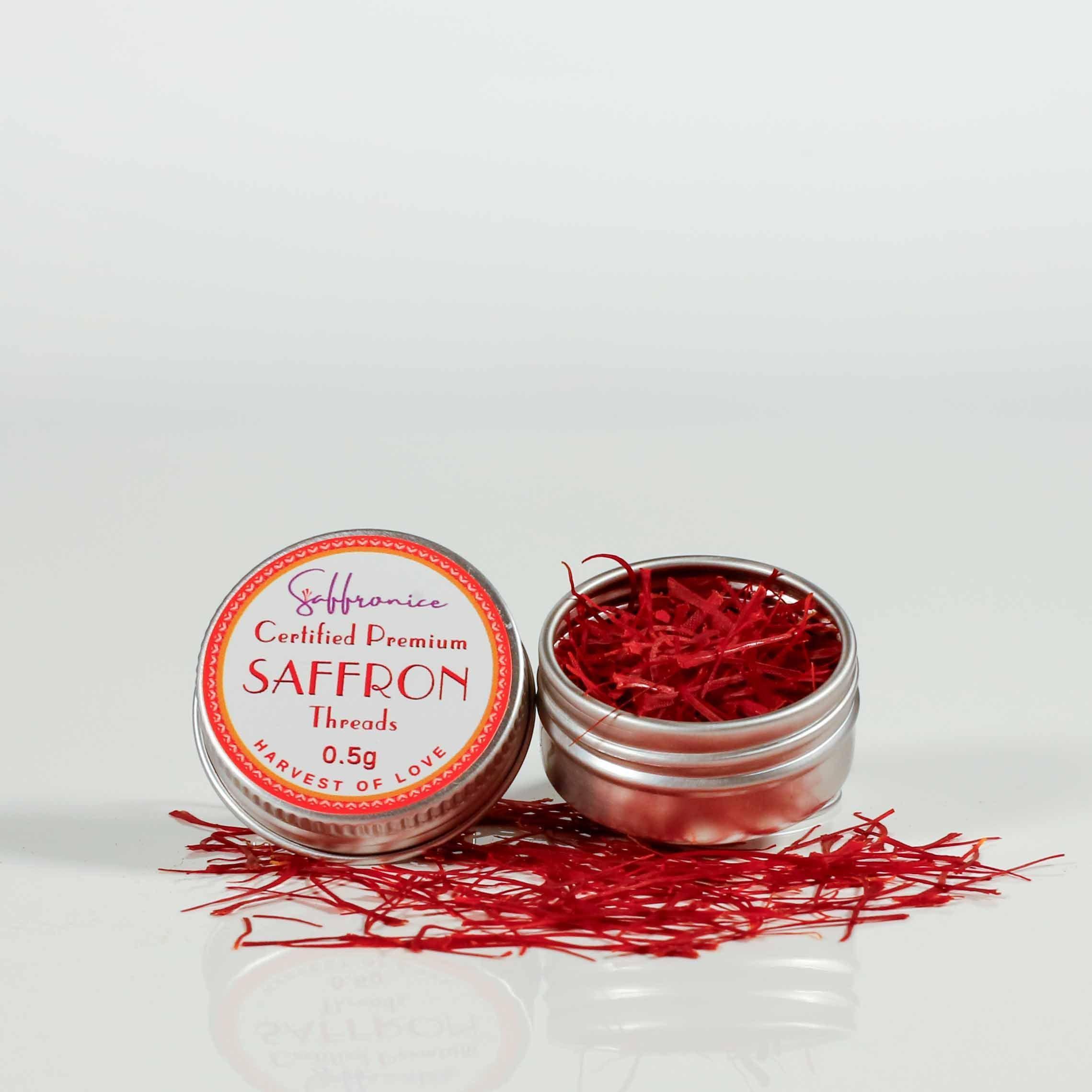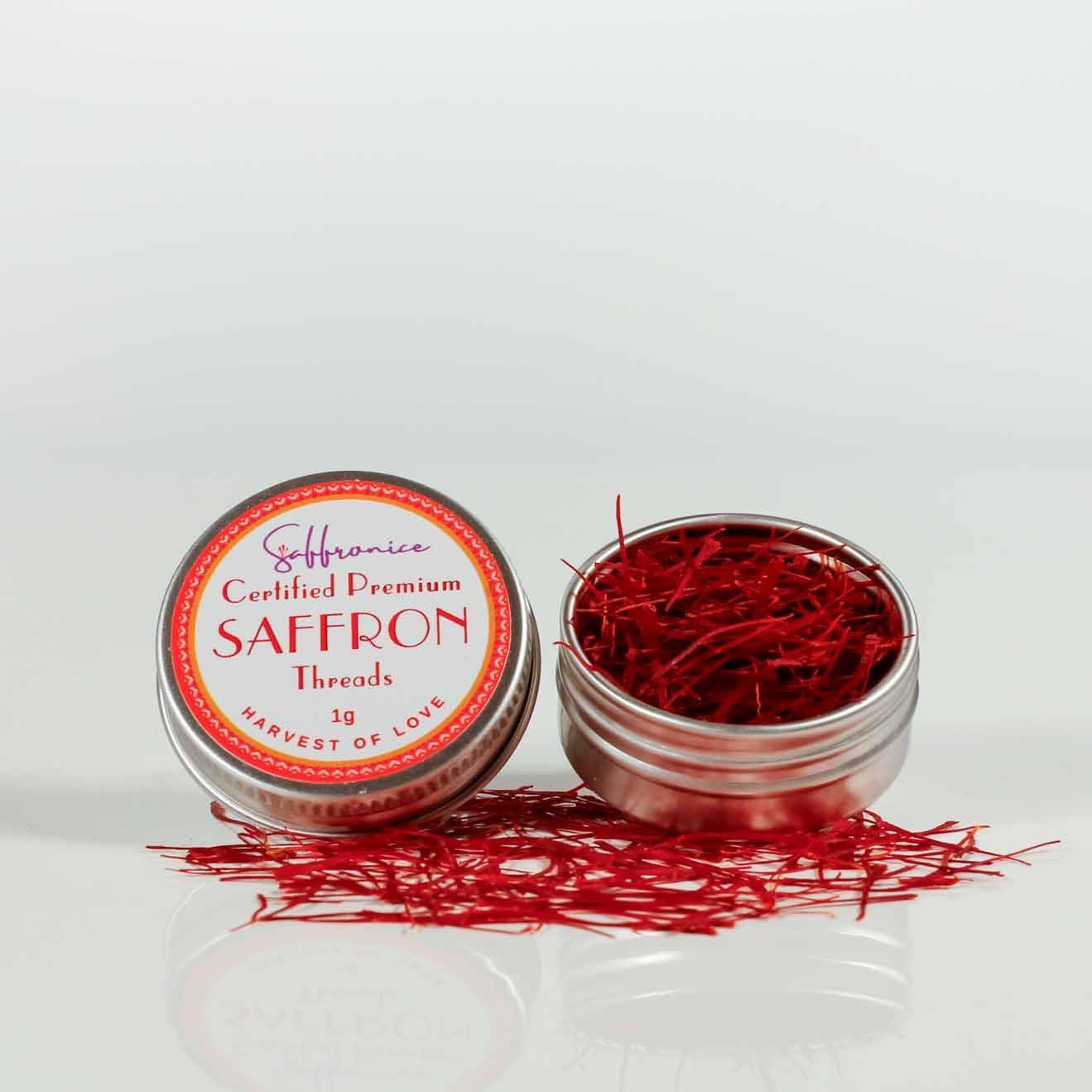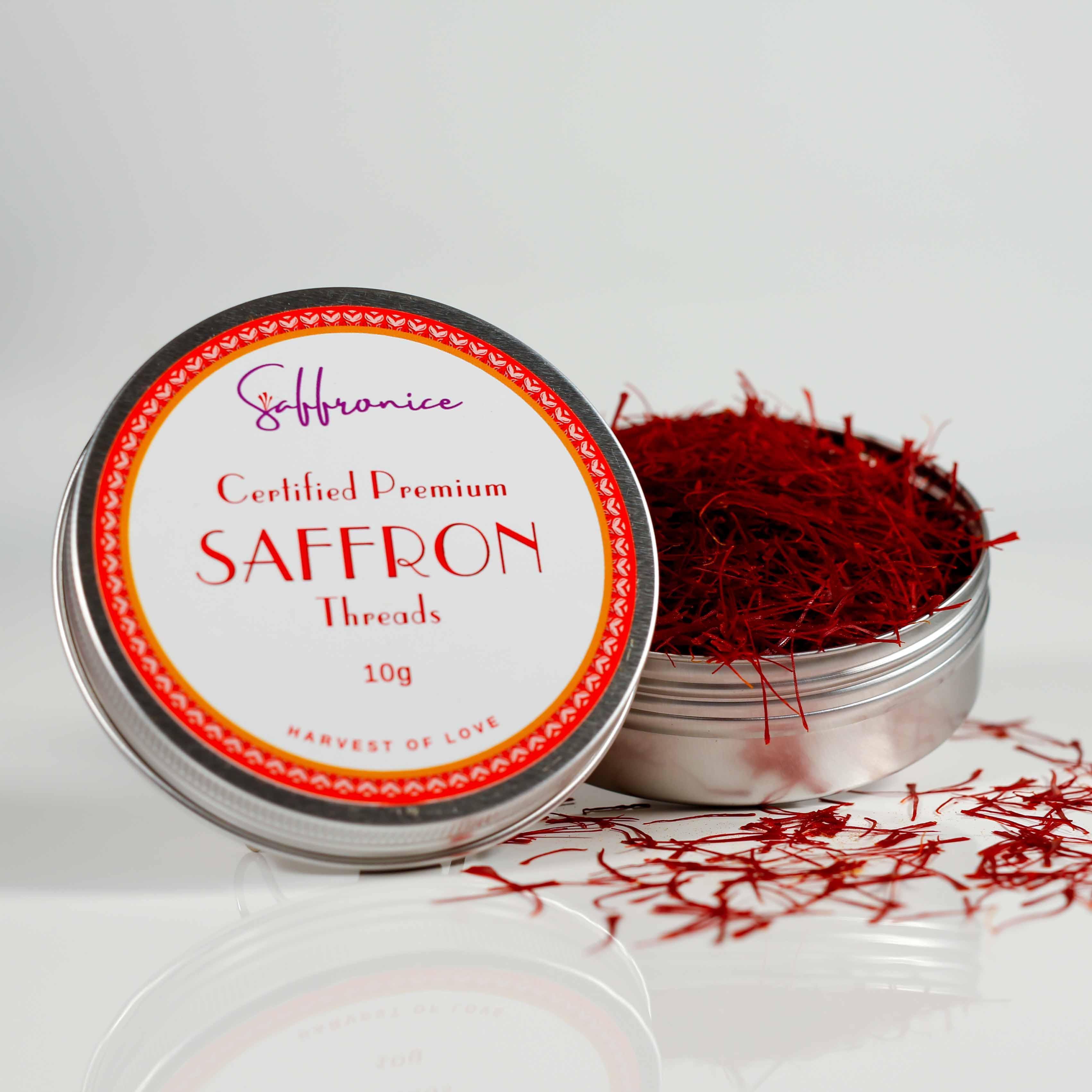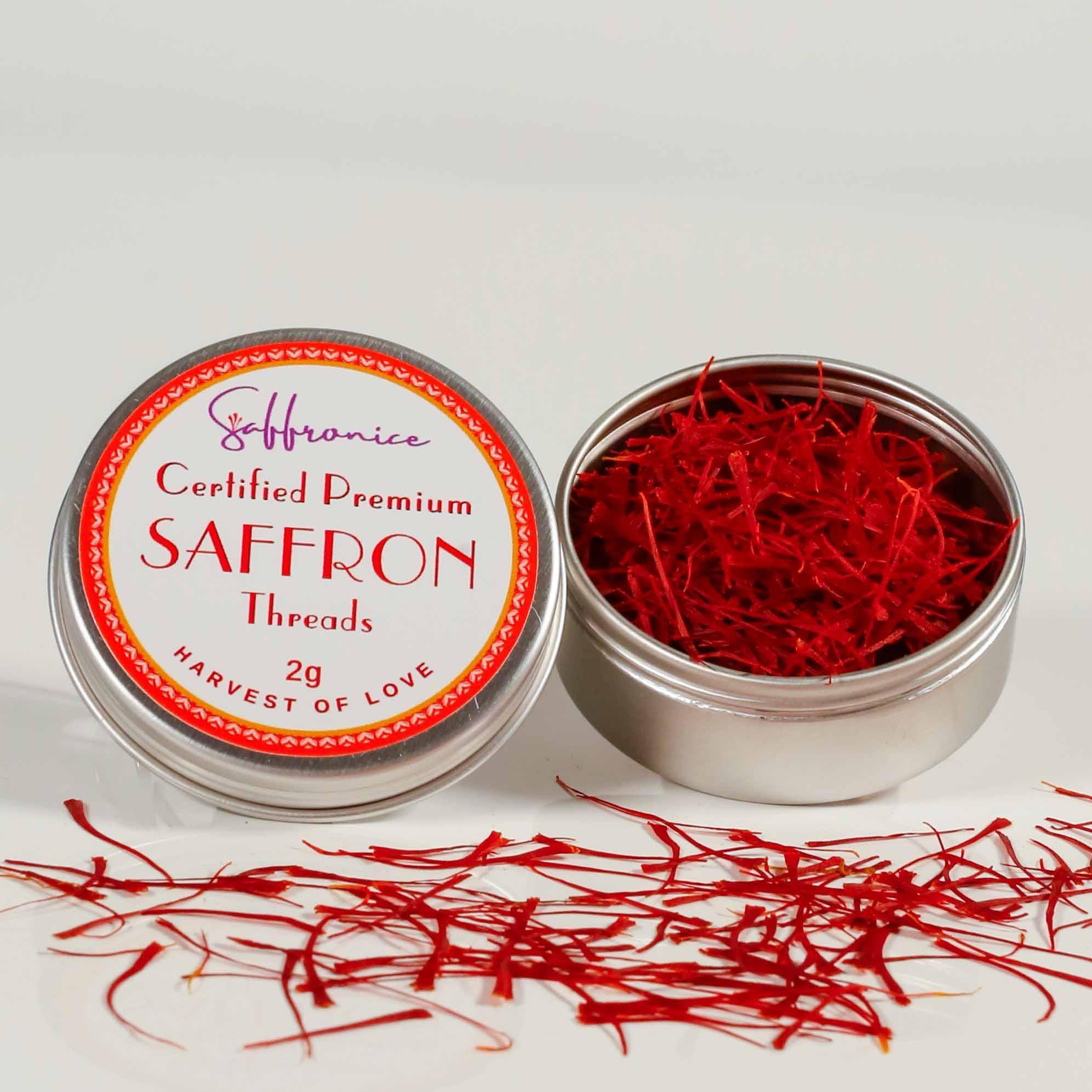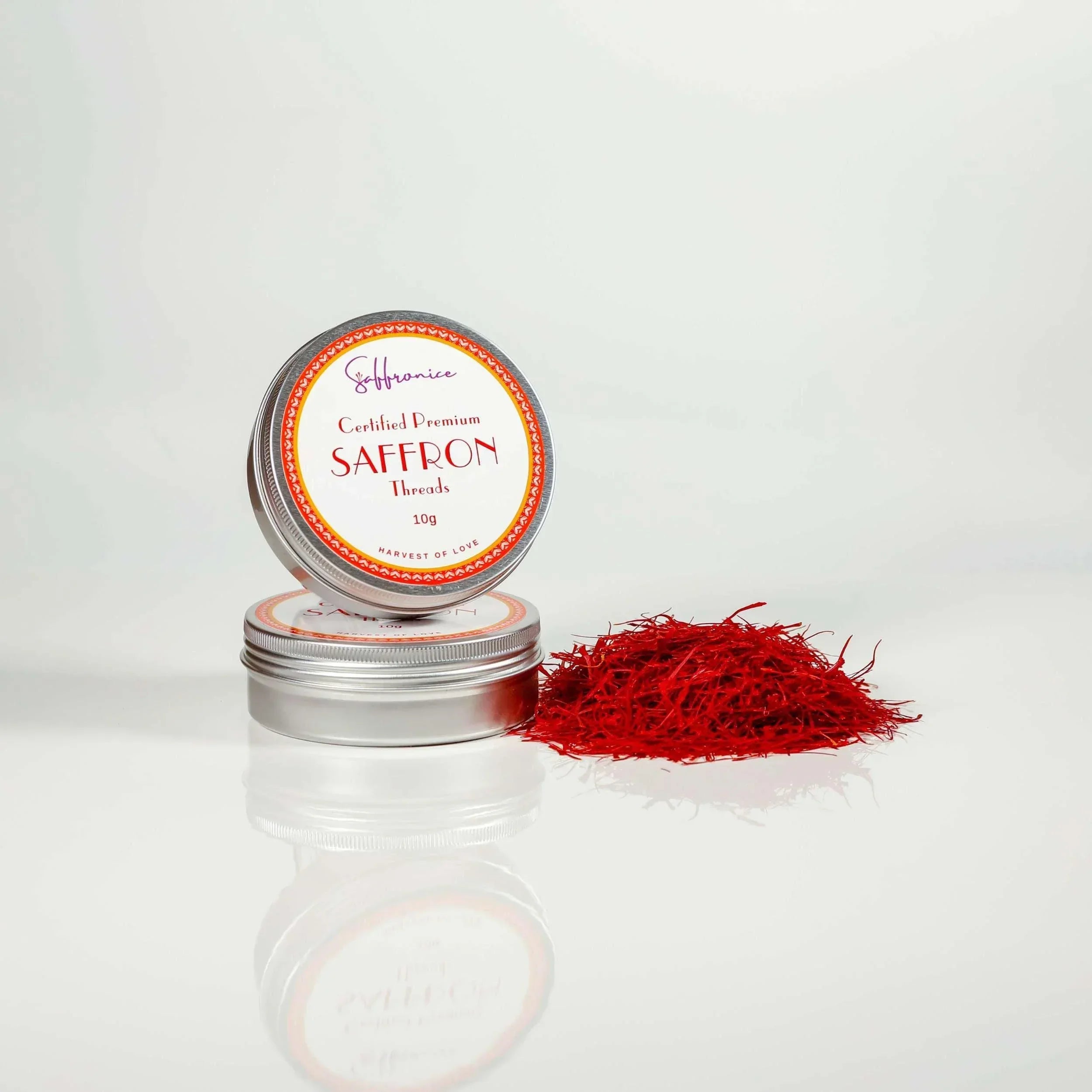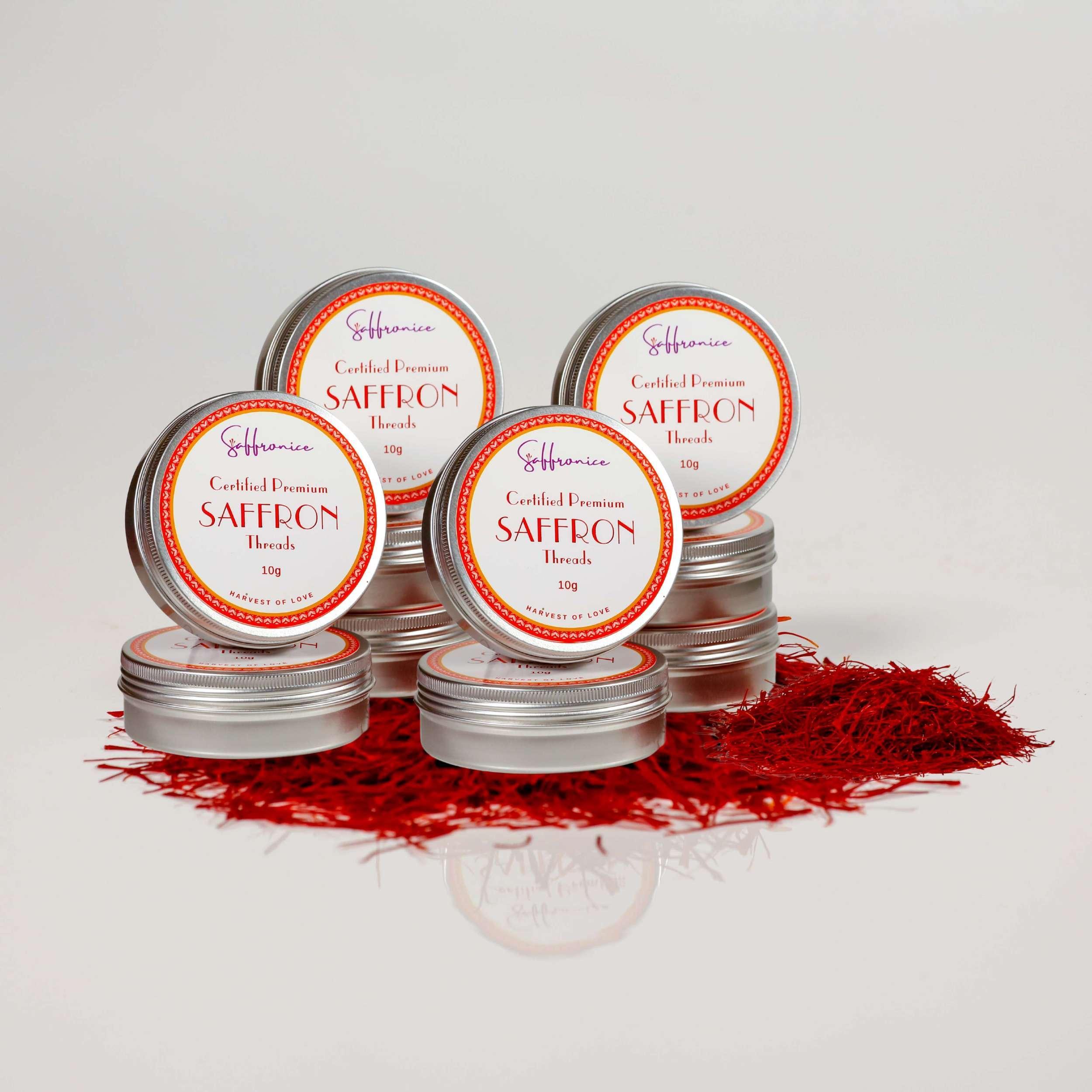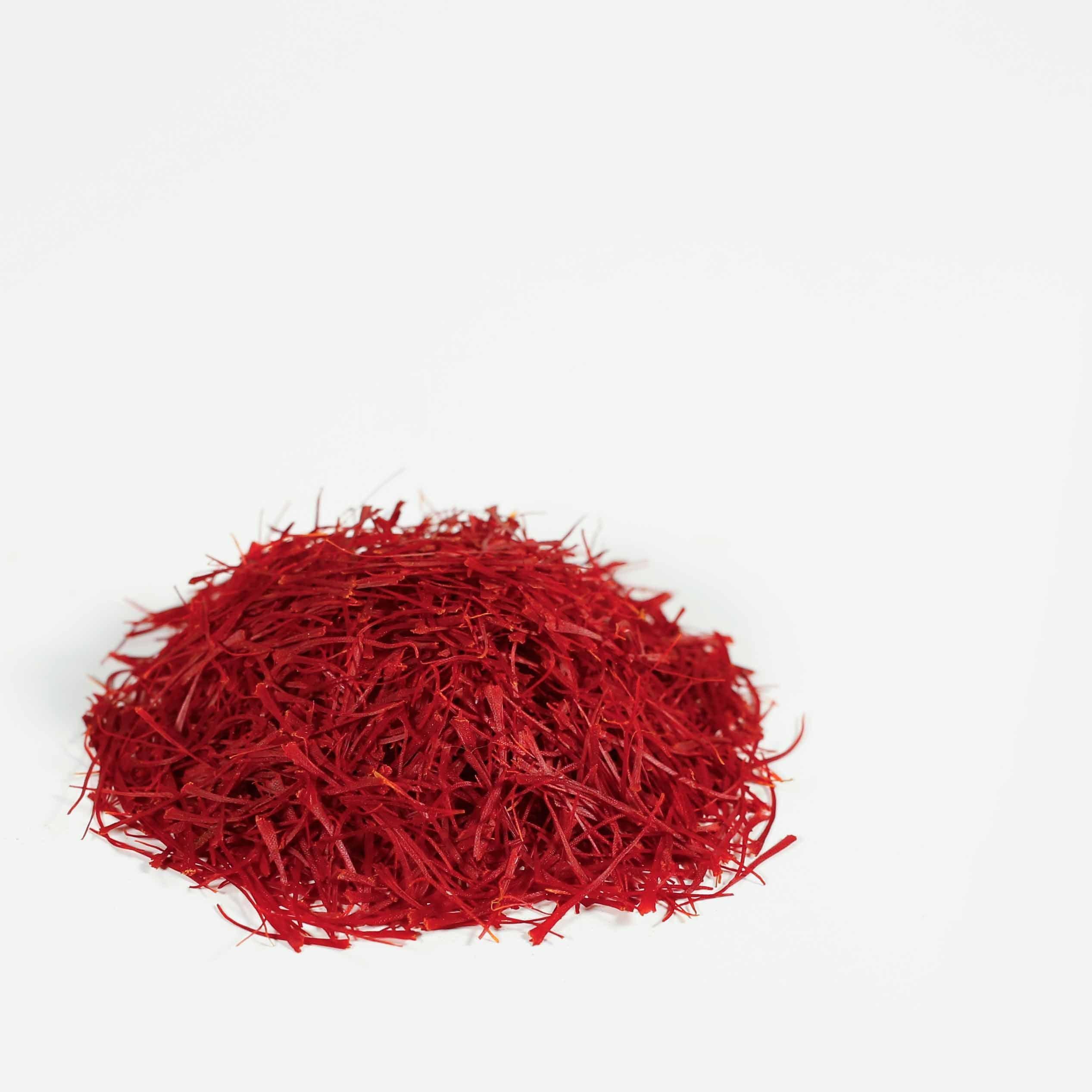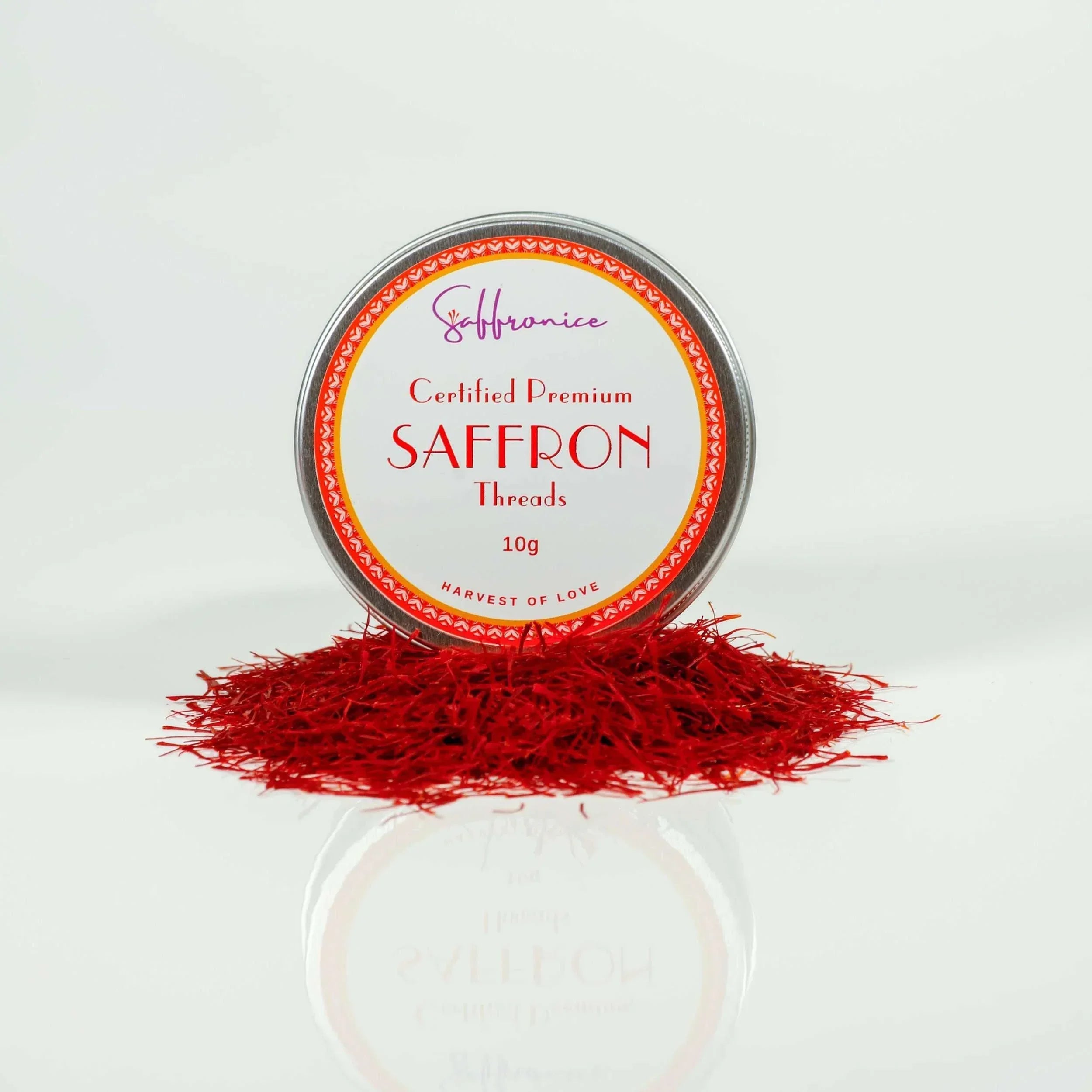Saffron, often referred to as the "golden spice," is highly valued in both cooking and medicine. Its distinct smell and bright color make it a sought-after ingredient in cuisines around the world, while its healing qualities have been appreciated in traditional medicine for hundreds of years. Unfortunately, the high price of genuine saffron has led to widespread fraud, making it essential for consumers to know how to identify real saffron.
How to identify real saffron from fake ones can be difficult but is necessary to ensure authenticity and quality. In this guide, we will provide you with detailed information on how to confidently tell the difference between genuine saffron and counterfeit saffron.

Understanding Saffron and Its Varieties
Saffron, derived from the Crocus sativus flower, is a spice that has captivated cultures for centuries. Known as one of the most expensive spices by weight, its value lies in its labor-intensive harvesting process and its unique culinary and medicinal properties. Each flower yields only three red stigma threads, which are meticulously handpicked and dried to produce saffron.
Major Saffron-Producing Countries
- Iran: Leading the global production, Iranian saffron boasts a high crocin content, giving it a superior color and potency. It accounts for over 97% of the world’s supply.
- Spain: Though facing challenges due to climate change, Spain still produces notable saffron varieties such as Coupe and Mancha.
- India: The Kashmir region of India is famed for its saffron, known for a distinctive aroma though slightly less intense in color compared to its Iranian counterpart.
Saffron Grades
Understanding saffron grades is crucial for identifying quality. Factors to consider include thread thickness, color intensity, aroma strength, and overall appearance. For instance, Negin, considered the top grade, features long, thick threads with the highest potency. In contrast, Sargol comprises pure red stigmas offering strong color and aroma but shorter threads. Pushal contains some yellow parts of the style; it’s less potent but more affordable.
Authenticating saffron involves verifying its origin and ensuring it meets stringent standards like color, flavor, and aroma. Knowing these details helps justify why real saffron commands such high prices.
The Unique Taste of Saffron
But what does saffron taste like? This spice offers a unique flavor profile that includes sweet, earthy, and floral notes. These characteristics make saffron a cherished spice in cuisines worldwide. The distinct taste sets it apart from other spices and adds an unparalleled depth to dishes.

Key Features of Authentic Saffron You Should Know
The use of genuine saffron in cooking is not only a way to enhance flavor but also to introduce vibrant color and numerous health benefits. This versatile spice can be incorporated into various dishes, such as in the saffron rice prepared the Persian way
1. Appearance
The genuine saffron threads, known as stigmas, are long and trumpet-shaped with a deep red hue. These crimson threads are attached to a pale yellow style, which is another indicator of authenticity. The rich color is not only pleasing to the eye but also signifies high-quality saffron.
2. Aroma
One of the most enchanting features of authentic saffron is its captivating aroma. It carries a sweet, floral scent that brings to mind hints of honey and earthiness. This delightful fragrance is a result of the high levels of safranal present in quality saffron.
3. Flavor
When tasted directly, real saffron offers a distinctive bitter flavor. This unique taste, though intense, adds depth and richness to culinary dishes. High-quality saffron imparts its subtle essence into food, enhancing flavors without overpowering them. However, it's important to note that saffron can taste bad if it's not genuine or used improperly.
Understanding these key features not only enriches your appreciation for this precious spice but also equips you with the knowledge to make informed purchasing decisions. Recognizing these attributes ensures you enjoy the full benefits and flavors that authentic saffron brings to both your kitchen and lifestyle.
Cooking with Saffron
Once you've acquired genuine saffron, knowing how to use it effectively in your cooking can elevate your dishes significantly. For instance, incorporating saffron into a soothing soup can create a delightful culinary experience. Such recipes can be easily found online, like this soothing soup recipe that highlights the use of saffron in cooking.
Spotting Fake Saffron: Common Impostors and How to Identify Them

Unfortunately, saffron is often counterfeited, with several impostors pretending to be this prized spice. Recognizing these fakes is crucial for anyone seeking the authentic experience of true saffron.
Common Impostors
Here are some common substitutes that may be used instead of genuine saffron:
- Corn Silk Threads: Often dyed to mimic the vibrant red color of saffron, corn silk threads lack the characteristic shape and structure of genuine saffron threads.
- Dyed Horse Hair: This cheap substitute can be colored to resemble saffron but lacks its unique fragrance and flavor.
- Shredded Paper: While it may seem unlikely, finely shredded and dyed paper is sometimes used to imitate saffron's appearance.
Identifying Real Saffron
One of the most reliable methods involves using your sense of smell. Real saffron exudes a sweet, floral scent reminiscent of honey. In contrast, fake saffron often gives off chemical-like or pungent odors that are immediate red flags.
Understanding these fake saffron characteristics enables consumers to make informed decisions. Equipped with this knowledge, you will find it easier to distinguish between genuine threads and their counterfeit counterparts, ensuring you enjoy the full essence and benefits of authentic saffron.
Practical Methods to Test Saffron Purity at Home
Testing saffron's authenticity at home is both necessary and straightforward. Here are some effective saffron purity tests you can try:
Color Release Test
Begin by placing a few saffron threads in a glass of cold water. Real saffron will release a rich, golden hue gradually, without losing its vibrant red color. In contrast, counterfeit varieties often bleed color rapidly, indicating the use of artificial dyes.
Rubbing Test
Gently rub saffron threads between your fingers. Authentic saffron should not crumble or produce dust upon rubbing. If it does, it may be mixed with other substances or be an imitation such as dyed fibers.
Baking Soda Test
Mix a small amount of baking soda in water, then add the saffron threads. Genuine saffron will lead to a yellowish tinge due to the natural coloring agents interacting with baking soda. Fake ones may not cause any significant change or might even turn an unusual color.
Taste Test
When tasted directly, real saffron threads should exhibit a distinctive bitter flavor. This is due to the presence of picrocrocin, an indicator of authenticity. Sweetness or lack of taste might hint at adulteration.
These simple methods ensure your saffron is genuine and high-quality, enhancing both culinary and medicinal applications.

Visual Differences Between Real and Fake Saffron
Distinguishing between real saffron and its impostors requires a keen eye for detail. Visual identification of saffron begins with examining the color. Genuine saffron threads are a vibrant crimson red, often with a hint of orange at the tips. In contrast, fake saffron may appear dull or overly uniform in color, sometimes even artificially bright due to dyes.
Key Features to Look For:
- Color Difference: Real saffron is rich in deep red tones. Counterfeit versions might display a range of colors from pale yellow to an unnatural red, which can be a sign of dye use.
- Shape and Texture: Authentic saffron threads have a unique trumpet shape, tapering at one end. This shape is not just random; it results from the natural structure of the stigma of the Crocus sativus flower. On the other hand, fake saffron may lack this distinct form and feel brittle or too smooth when handled.
Understanding these visual cues can significantly aid in identifying true saffron from its less authentic counterparts, ensuring that what you purchase is genuine and worth your investment.
Authentic Saffron vs. Safflower: A Closer Look
Understanding the difference between authentic saffron and safflower is essential for anyone looking to purchase high-quality saffron. While both are derived from flowers, they come from entirely different plants.
Safflower, often used as a cheaper substitute, originates from the Carthamus tinctorius plant. Its petals are sometimes misleadingly marketed as saffron due to their similar color but lack the unique properties of true saffron.
Key Differences
- Color: Safflower petals have an orange hue, whereas authentic saffron threads are deep crimson red.
- Shape: Real saffron consists of long, trumpet-shaped stigmas, unlike the flat petals of safflower.
- Aroma & Flavor: True saffron boasts a sweet, floral scent and slightly bitter taste, distinguishing it from the milder aroma and taste of safflower.
Identifying authentic saffron involves careful observation of these characteristics to ensure you're getting the genuine article rather than a less flavorful impostor. For a more in-depth understanding of these differences, you can refer to this comprehensive safflower vs saffron comparison or this detailed safflower vs saffron article.
The Economic Factors Behind Real Saffron’s Price Tag
Saffron's high price is largely due to the labor-intensive harvesting process. Each saffron flower, known scientifically as Crocus sativus, produces only three delicate threads or stigmas. These threads must be hand-picked with great care to avoid damage. To put this into perspective, it takes approximately 75,000 flowers to produce just one pound of saffron.
Key Economic Factors:
- Labor Intensity: Hand-picking requires meticulous effort and a skilled workforce.
- Yield: Vast numbers of flowers are needed for a small amount of spice.
- Harvesting Time: Flowers must be picked at dawn before they fully bloom.
These factors collectively answer the question, "why is real saffron expensive?" The intricate process ensures that every strand is of high quality, contributing to saffron's luxurious status in the market.

Tips for Buying Authentic Saffron Online and Verifying Its Origin
When buying saffron online, it's important to make sure it's genuine. Here are some tips for buying authentic saffron online:
Recommendations for Choosing Reputable Sellers
- Certifications and Reviews: Look for sellers who provide clear certifications, such as ISO 3632 compliance, which indicates adherence to international quality standards. Checking customer reviews can also offer insights into the reliability of the seller.
- Reputable Sources for Purchasing Saffron: Opt for well-known brands or suppliers with a history of delivering high-quality saffron. Websites like saffronice.com, known for handpicked and non-GMO products, can be trusted.
Key Features to Look for When Purchasing Online
- Packaging Standards: Authentic saffron should come in UV-protected packaging to preserve its vivid color and aroma. Avoid purchases where the packaging seems inadequate or unsealed.
- Product Labels and Certifications: Assess labels carefully. They should detail the saffron’s origin, grade (e.g., Negin, Sargol), and any relevant certifications.
Importance of Knowing the Geographical Source
Understanding the geographical source is vital in verifying saffron’s authenticity:
- Kashmir vs. Iran: Iranian saffron is renowned for its intense color and flavor due to high crocine levels, whereas Kashmiri saffron is valued for its unique flavor profile despite a lighter hue. Knowing these distinctions can guide your purchase decisions.
By following these guidelines, you'll be better equipped to identify and purchase genuine saffron that enhances your culinary creations.
Conclusion
Identifying real saffron from fake is not just about recognizing a spice; it's about appreciating an intricate blend of flavor, aroma, and tradition. With the knowledge from this guide, you can confidently navigate the saffron market and make informed purchasing decisions. Whether you're drawn to its culinary allure or its potential health benefits, authentic saffron offers a unique experience that imitation simply cannot match.
Key Takeaways for Identifying Real Saffron:
- Appearance: Genuine saffron threads are deep red with trumpet-shaped ends.
- Aroma: Look for a sweet, floral scent reminiscent of honey.
- Flavor: Expect a distinctive bitter taste when tasted directly.
Applying these insights ensures that you enjoy the full spectrum of advantages that authentic saffron provides—be it enhancing the flavors of your favorite dishes or contributing to your wellness routine. By choosing wisely, you celebrate a heritage spice renowned for centuries across cultures worldwide. Enjoy the vibrant color and exquisite taste that only true saffron can deliver, and let it elevate your culinary creations and well-being.
FAQs (Frequently Asked Questions)
What is saffron and why is it significant?
Saffron is a spice derived from the Crocus sativus flower, known for its culinary and medicinal uses. It is highly valued for its unique flavor, aroma, and vibrant color, making it a prized ingredient in various dishes.
How can I identify authentic saffron?
To identify authentic saffron, look for red stigma threads that are trumpet-shaped, a sweet floral aroma reminiscent of honey, and a distinctive bitter taste when tasted directly. Additionally, be cautious of common impostors such as corn silk or dyed horse hair.
What are some methods to test saffron purity at home?
You can test saffron purity at home using several methods: the Color Release Test (observing color change in cold water), Rubbing Test (checking for crumbling), Baking Soda Test (using a baking soda mixture), and Taste Test (identifying bitterness).
How does real saffron differ visually from fake saffron?
Real saffron typically has vibrant red stigma threads with a trumpet shape, while fake varieties may appear duller or have different textures. Observing color differences can help distinguish genuine saffron from imitations.
Why is real saffron so expensive?
Real saffron is expensive due to the labor-intensive harvesting process, which involves hand-picking flowers. Each flower produces only three stigma threads, making the cultivation and collection process time-consuming and costly.
What tips should I follow when buying saffron online?
When buying saffron online, choose reputable sellers with good reviews and certifications. Look for specific packaging standards and verify the geographical source of the saffron. Assess product labels carefully to ensure authenticity.


